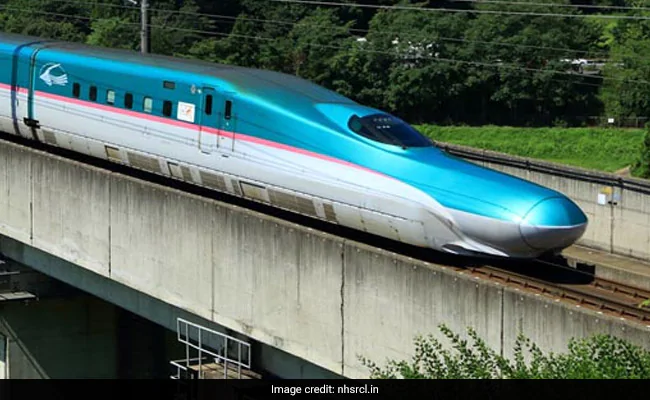
Gujarat’s Bullet Train Corridor about to complete soon
AHMEDABAD : The Mumbai-Ahmedabad Bullet Train Project has reached a significant milestone with the completion of 17 steel bridges in Gujarat, marking nearly 50% progress in the state’s planned 28 steel structures. The latest addition, a 100-metre-long steel bridge near Bharuch, exemplifies the project’s commitment to advanced engineering and indigenous manufacturing.
The newly launched steel bridge weighs approximately 1,432 metric tonnes and stands 14.6 metres tall, with a width of 14.3 metres. Fabricated at a workshop in Bhuj, Gujarat, the bridge was transported to the site and assembled at a height of 14.5 metres above the ground on temporary trestles. Utilising an 84-metre-long launching nose weighing about 525 metric tonnes, the bridge was pushed into position using two semi-automatic jacks, each with a 250-tonne capacity, employing mac-alloy bars. The bridge’s construction incorporated approximately 60,000 Tor-Shear Type High Strength (TTHS) bolts and features elastomeric bearings and C5-grade protective coating, all designed to ensure a lifespan of 100 years. This development underscores the project’s alignment with the ‘Make in India’ initiative, highlighting the use of domestically produced materials and technology.
The Mumbai-Ahmedabad high-speed rail corridor, spanning 508 kilometres, is poised to revolutionise long-distance travel between the two cities, aiming to reduce the travel time to under three hours. The completed steel bridges play a crucial role in facilitating the elevated track system, which is essential for maintaining the high-speed operations of the train. These structures are strategically located to cross over existing railway lines, highways, and irrigation canals, ensuring minimal disruption to existing infrastructure. In line with sustainable development goals, the project has implemented measures to mitigate environmental impact, including the installation of over 300,000 noise barriers along the completed viaduct stretches. Additionally, the use of advanced construction techniques, such as the Full Span Launching Method (FSLM) and Span-by-Span (SBS) method, has expedited the construction process while adhering to safety and quality standards.
With the completion of 17 steel bridges in Gujarat, the project is progressing towards its goal of operationalising the first phase between Surat and Bilimora by 2026. The successful execution of these steel bridges demonstrates India’s growing expertise in high-speed rail infrastructure and sets a precedent for future projects under the ‘Make in India’ initiative. As the project advances, it is expected to contribute significantly to regional connectivity, economic growth, and the development of sustainable transportation solutions.
